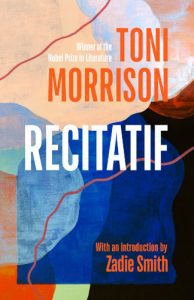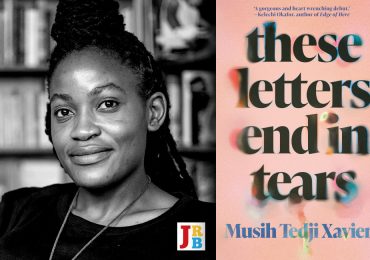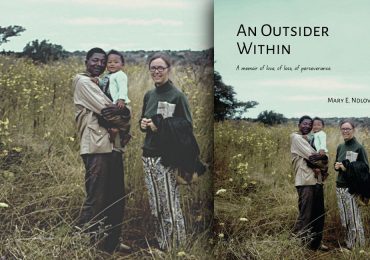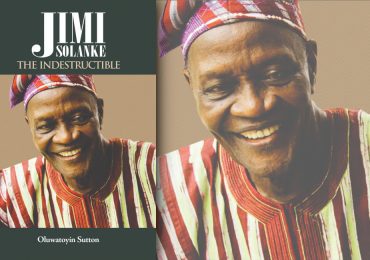To respect this text is to revisit it: Masiyaleti Mbewe reviews the new standalone edition of Toni Morrison’s Recitatif.

Recitatif
Toni Morrison
Chatto and Windus, 2022
Before we continue, I find it worth noting that in order to truly experience Recitatif as the experiment Toni Morrison intended it to be, as well as engage the tower of discourse it has produced over the forty years since its initial release, one must independently read the story first.
In other words, avoid spoilers—and this review is full of spoilers.
‘Recitatif’, Toni Morrison’s experimental—and lone—short story, requires a few variables to work. There’s the subject (you), a short story twenty-odd pages long and, to quote Morrison’s preface to her book of literary criticism, Playing in the Dark: Whiteness and the Literary Imagination, ‘the removal of all racial codes from a narrative about two characters of different races for whom racial identity is crucial.’ Originally published in Confirmation: An Anthology of African American Women in 1983, the short story was reissued this year by Knopf as a standalone edition, featuring a masterful introduction by novelist Zadie Smith.
At its surface, ‘Recitatif’ explores a kinship sparked in room 406 of a state orphanage (St Bonaventure’s) between two eight-year-old girls, Twyla and Roberta. Underneath the skin of the narrative however, and due in large part to Morrison’s omission of which racial identity each girl holds, are our internalised responses to our frustrating inability to place each character neatly in the racial context that satisfies and confirms our understanding of who they are in the narrative—or, more accurately, who we want them to be. From the first vignette to the fifth, and final one, Morrison utilises Twyla and Roberta’s run-ins as a sort of playground. Encounters are littered with clues and misdirects that indicate who is—or might be—Black or white. As Smith notes in her introduction to the text:
Much of the mesmerizing power of ‘Recitatif’ lies in that first definition of ‘peculiar to’: that which characterizes. As readers, we urgently want to characterize the various characteristics on display. But how? My mother danced all night and Roberta’s was sick. Well, now, what kind of mother tends to dance all night? A black one or a white one? And whose mother is more likely to be sick? Is Roberta a blacker name than Twyla? Or vice versa? And what about voice? Twyla narrates the story in the first person, and so we may have the commonsense feeling that she must be the black girl, for her author is black. But it doesn’t take much interrogating of this ‘must’ to realize that it rests on rather shallow, autobiographical ideas of authorship that would seem wholly unworthy of the complex experiment that has been set before us.
In this way, Recitatif is cunning in its ability to expose us. While reading, we often try to shift away from interrogating these racial biases and instead we try even harder to force Twyla and Roberta into ‘their place’. But to respect this Morrison text is to revisit it in the hopes of truly understanding what she wanted us to learn from being the true subjects of her literary experiment. We have to be willing to examine the implications our biases bring to the ways we navigate interpersonal relations with other racialised people. As sex therapist Dr Donna Oriowo said on the cultural commentary platform The Grapevine, ‘When someone asks what you are, what they are really asking is, “how should I treat you?”’ Similarly, when we are so desperate to figure out who is Black and who is white, we are trying to return to a learned way of conduct. When faced with a text like ‘Recitatif’, we want to know how to analyse these characters and their motivations; more importantly we want to figure out whose side we are on. To this point, Smith adds:
… what is essentially black or white about Twyla and Roberta I believe we bring to ‘Recitatif” ourselves, within a system of signs over which too many humans have collectively labored for hundreds of years now. It began in the racialized system of capitalism we call slavery; it was preserved in law long after slavery ended, and continues to assert itself, to sometimes lethal effect, in social, economic, educational, and judicial systems all over the world. But as a category the fact remains that it has no objective reality: it is not, like gravity, a principle of the earth. By removing it from the story, Morrison reveals both the speciousness of ‘black-white’ as our primary human categorization and its dehumanizing effect on human life. But she also lovingly demonstrates how much meaning we were able to find—and continue to find—in our beloved categories. The peculiar way our people make this or that dish, the peculiar music we play at a cookout or a funeral, the peculiar way we use nouns or adjectives, the peculiar way we walk or dance or paint or write—these things are dear to us.
Despite Morrison’s mischievous intentions with the text and Smith’s thorough analytic discussion of them, it would be remiss of us not to recognise that for Black folks navigating race can be a matter of life and death. The intuitive need to figure out where people stand racially allows us [Black folks] to discern whether a space is safe or not: be it in reality or in a text, we are constantly asking, ‘how vulnerable can I be here?’ The inability to confidently answer this question upon reading ‘Recitatif’ might present a mild anxiety, even as the story on the page retains a humour that we’re aware of every time we think we’ve guessed right and the glaring contradictory evidence renders our efforts futile.
While we are preoccupied, closely inspecting Twyla and Roberta, what brings them together and what tears them apart, swept up in who might be Black—no, white—definitely white—surely Black—we neglect to engage another crucial character in the story, Maggie, a disabled worker at the orphanage. Twyla narrates:
Maggie couldn’t talk. The kids said she had her tongue cut out, but I think she was just born that way: mute. She was old and sandy colored and she worked in the kitchen. I don’t know if she was nice or not. I just remember her legs like parentheses and how she rocked when she walked. She worked from early in the morning till two o’clock, and if she was late, if she had too much cleaning and didn’t get out till two fifteen or so, she’d cut through the orchard so she wouldn’t miss her bus and have to wait another hour. She wore this really stupid little hat—a kid’s hat with earflaps—and she wasn’t much taller than we were. A really awful little hat. Even for a mute, it was dumb—dressing like a kid and never saying anything at all.
‘But what about if somebody tries to kill her?’ I used to wonder about that. ‘Or what if she wants to cry? Can she cry?’
‘Sure,’ Roberta said. ‘But just tears. No sounds come out.’
‘She can’t scream?’
‘Nope. Nothing.’
‘Can she hear?’
‘I guess.’
‘Let’s call her,’ I said. And we did.
‘Dummy! Dummy!’ She never turned her head.
‘Bow legs! Bow legs!’ Nothing. She just rocked on, the chin straps of her baby-boy hat swaying from side to side.
Memory is a recurring theme in a lot of Morrison’s work, and the way Maggie appears in this story—as a contested memory Twyla and Roberta share—sets the pair up for their own guessing game. Maggie is as racially ambiguous to them as they both are to us, and this introduces a whole new set of implications to the narrative. Her race, how they treat her, and how they remember treating her ripple into the cerebral ideas of who they think they were, who they’ve turned out to be and, lastly, how they perceive one another. Maggie is quite literally the personification of their own complicated feelings about their identities, their mothers and what their place in the world is. Smith writes:
Their most contested site is Maggie. Maggie is their Columbus Day, their Thanksgiving. What the hell happened to Maggie? […] The personal connection they once made can hardly be expected to withstand a situation in which once again race proves socially determinant, and in one of the most vulnerable sites any of us have: the education of our children. Mutual suspicion blooms. Why should I trust this person? What are they trying to take from me? My culture? My community? My schools? My neighborhood? My life? Positions get entrenched. Nothing can be shared.
With this new edition of ‘Recitatif’ comes a renewed interest in Toni Morrison’s experiment and, even though Smith’s sharp and immersive introduction offers a wealth of cultural and historical context that adds new dimensions to the internal and external dialogue we engage upon rereading the story, the same sentiments echo as when it was first published:
What the hell happened to Maggie?
Who was Black?
Who was white?
And, most importantly,
Oh, there’s still so much more I can learn from this story …
- Masiyaleti Mbewe (she/they) is a queerfuturist writer, photographer, sometimes YouTuber, African feminist and TEDx alumna. They have written for Refinery 29, Amaka Studio, People’s Stories Project, Tagged, The Namibian Newspaper and Sister Namibia. Her fiction has been longlisted for the Short Story Day Africa Prize as well as the Kalemba Short Story Prize. Follow them on Twitter, Instagram and YouTube.





